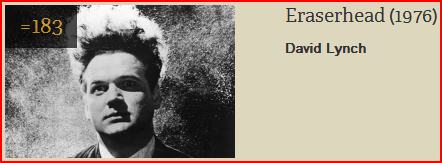Gurglings of a Putrid Stream
Thoughts on books and other assorted topics.
See also: http://goppf.wikidot.com/swstart
My name: Brian Martin
King Kong (1933), directed by Merian C. Cooper and Ernest B. Schoedsack
![King Kong (1933) [HD] -](http://booklikes.com/photo/max/200/300/upload/books/3/26/41bbee9db2e695224fa8ef51c3dc16ab.jpg)
"At a Hollywood party in 1972, I saw Hugh Hefner introduced to Fay Wray. 'I loved your movie,' he told her. 'Which one?' she asked." - Roger Ebert
Fay Wray -- not just the original scream queen.
If it wasn't a classic, King Kong would be a hard sell to modern audiences. It's dated in so many ways: in its acting, its special effects, its social values. Why bother, particularly now that we have Jurassic Park? I think the answer to that question is one major reason why King Kong is considered a classic and why it keeps charting on all those "best of" lists, including the granddaddy of them all, Sight & Sound's "Best Films" list, where, at 171, it ties with such movies as Star Wars, Notorious, and Goodfellas.
(Check out #183):
The answer is that grandeur never goes out of style. In its technical aspects and its imaginativeness, King Kong remains an awesome achievement.
Even today, it stands apart from most other monster movies in its scale and scope. Despite the singularity of its title -- there's only one Kong -- unlike other movies of its kind it doesn't stop there. It doesn't have one monster, it has eight. (Originally it had even more, but the scenes got cut.) It isn't set on an island or plateau forgotten by time; Skull Island is inhabited -- by primitives, it's true -- but primitives who maintain the great work of their ancestors, the giant wall separating them from Kong and the island's other fantastic creatures. When Kong escapes in New York his destruction isn't limited to one locale, he wreaks havoc over several blocks.
It's violence is equally majestic. Re-released several times, censors cut out a good deal of it. They cut out people being bitten or trampled by Kong and they cut out the giant ape, perched high on the wall of a tall building, tossing a woman aside so that she plummets to her death on the street below. But all that has been restored. King Kong has what all monster movies ought to have -- teeth. Kong is a beast, after all, and what cornered beasts do is kill if they can. Kong can.
The film has poetry, too. One high-angle shot of Ann Darrow, tied on the altar, with chanting natives at the top of the wall on one side and unknown horror on the other is almost cosmic. Another, of Kong undressing Ann and sniffing his fingers (oh, yes, the censors whacked that scene, as well) is funny but somehow beautiful at the same time. For Kong isn't merely a monster. He is also a tragic hero. Fay Wray says she was promised the lead opposite the "tallest, darkest leading man in Hollywood," whom she assumed was Clark Gable. And in a way, it was.
One thing about the effects. They're dated, sure, but they're very good, and it's obvious just how much care went into creating them. When Kong kills a T-Rex by breaking its jaw, blood flows out of its mouth. A little later, when the human hero finds the carcass, he frightens a scavenging Teratornis. The effects bring the island to life. The story is simple enough and so are the characters. But King Kong isn't a superficial film. It makes up for what it lacks with remarkable imaginative depth.
 2
2
![Dawn of the Planet of the Apes [Blu-ray] - Keri Russell](http://booklikes.com/photo/max/50/80/upload/books/2/c/2cbbba26ba6981bcf1027a4a109168d9.jpg)
![Age of Tomorrow [DVD] [Region 1] [US Import] [NTSC] - Robert Picardo, Kelly Hu](http://booklikes.com/photo/max/50/80/upload/books/0/e/0e28e61992d2afc9aac2c3f2864c6692.jpg)
